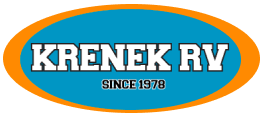
Krenek RV Center- “Family Fun Starts Here”
Before starting your RV adventure, it’s time to brush up on your RV vocabulary! Learn the meanings of common RV terms frequently used on forums and blogs.
We’ve come up with definitions for each term and provided examples, where applicable. After reading this guide, you’ll be ready to decipher shorthand descriptions and navigate RV owner groups with ease! Give us a call or stop in and see us in Coloma, MI 49038 Right off I-94!
RV Terms & Definitions
Numbered to C:
- 4-Pin Electrical Pin Connector: This provides power from your tow vehicle to your RV for the lights only.
- 7-Pin Electrical Pin Connector: This provides power from your tow vehicle to your RV for the lights as well as the electrically operated brakes.
- A/C: shorthand for air conditioner. Can be roof-top or side-mounted.
- Aluminum Exterior Sidewalls: This term refers to the outside construction of your RV. It consists of a wooden framing with an aluminum exterior and batten insulation in between the walls.
- Auxiliary or Coach Battery: An extra battery to run your 12-volt equipment.
- Back-up monitor: A camera mounted on the back of the RV that provides the driver with an extra eye when backing up the RV; back-up monitors are typically in-dash by the driver’s seat.
- Basement: The large storage area underneath your RV’s floor accessible from the outside storage doors.

- Black Water Tank Size or Capacity: The amount of waste water from the toilet that your RV’s black water tank can hold.
- Booth Dinette: Dining area with bench seats on opposite sides and a table in-between. Many RVs have booth dinettes that convert to an extra sleeping space.


- Brake Controller: A device mounted inside the tow vehicle that will apply the trailer brakes simultaneously when the tow vehicle brakes.
- Breakaway Switch: A safety switch that will automatically activate the brakes on the trailer if your trailer becomes separated from the tow vehicle.
- BTU (British Thermal Unit): It’s a measurement of heat; the quantity required to raise the temperature of one pound of water 1 degree F. RV air conditioning and furnace units are BTU-rated.
- Bunkhouse: Refers to the floorplan style of an RV that has bunk beds. We have many brands that have bunkhouses: Cherokee RV, Grey Wolf RV, Sportsmen RV, KZ RV, Della Terra RV, East-to-West RV, Georgetown RV’s, FR3, Vacationer, Endeavor,
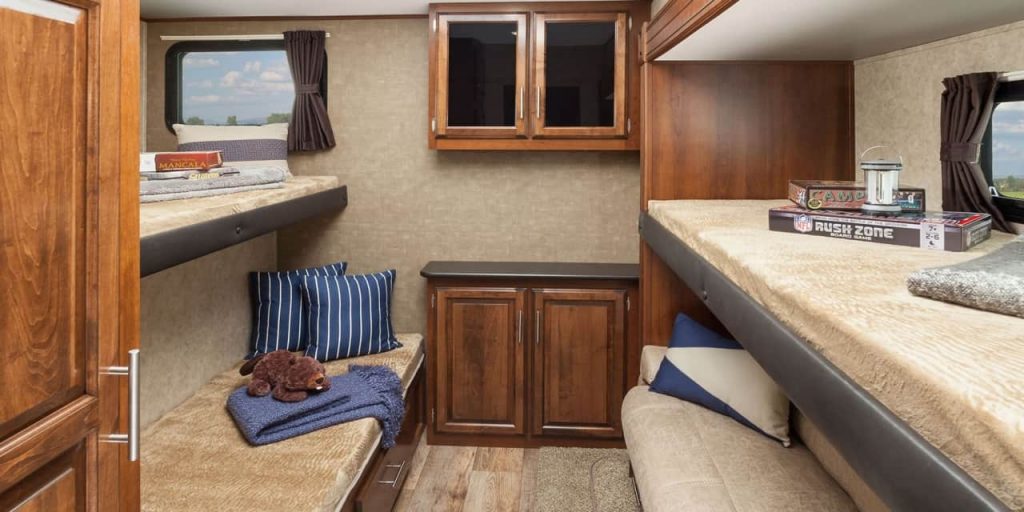
C to F:
- CCC (Cargo Carrying Capacity): The maximum weight limit for personal items you can add to an RV.
- Chassis: It’s the framework your RV is built upon. In motorhomes, the chassis generally includes the engine and transmission.
- Chassis Batteries: The battery (s) in your motorhome that operates 12 volt components of the drivetrain.
- Cockpit: Front of your motorhome in the cab where the driver pilot seat and passenger co-pilot seats are located.
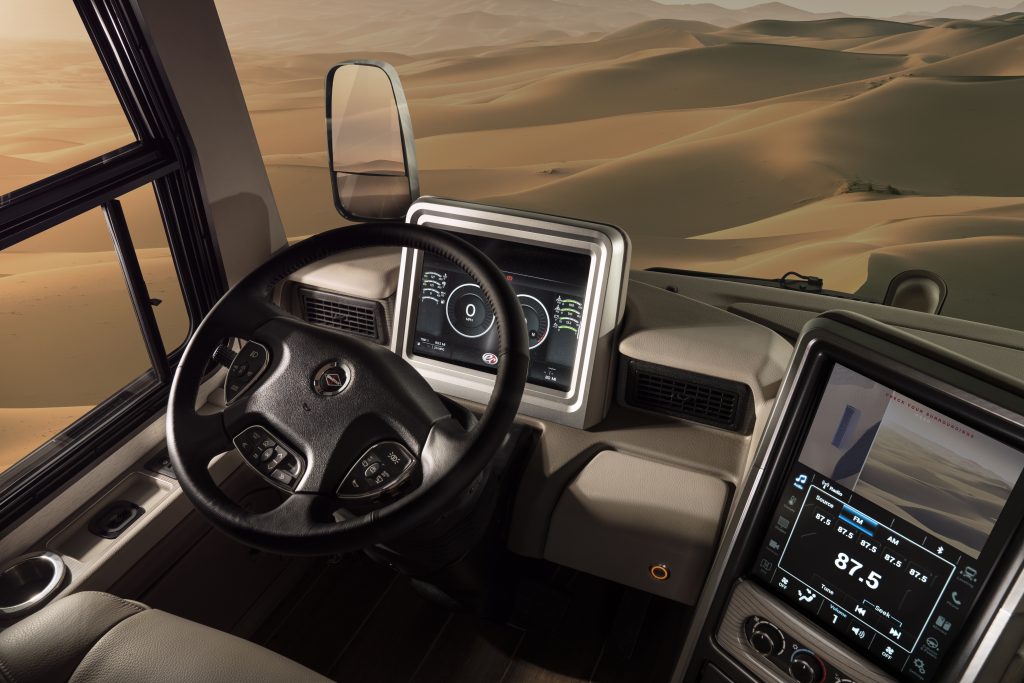
Control or Monitor Panel: A panel where you can control and adjust the RV’s systems for climate, water, power, tank size’s and solar controls. Many modern RVs include touchscreen panels and/or apps for ease of use.
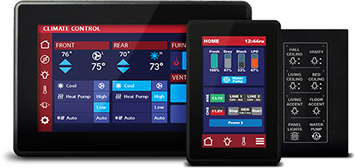
- Converter: Converts 120 volt AC power to 12 volt DC power and also charges your 12 volt battery.
- Diesel Puller – FRED (or FRont Engine Diesel): Refers to diesel motorhomes with engine located in the front of the RV.
- Diesel Pusher: Refers to diesel motorhome with engine located in the rear of the RV. The engine location helps push the RV down the road and provides a smoother, quieter ride. Brands like: Holiday Rambler, Monaco, Jayco, Navigator, Nautica, Endeavor, Armada

- Dinghy: A vehicle towed behind an RV; also called a “toad” occasionally. Ask Krenek RV For a list of vehicles.
- Dry Weight: The weight of the RV as it comes off the assembly line. Doesn’t include supplies, water, fuel, or passenger weights. Manufacturers weigh each RV and apply a sticker listing the dry weight prior to leaving the factory floor.
- DSI Ignition – Direct Spark Ignition: Used to describe the method of igniting the main burner on a propane fired appliance. Not needing a external lighter to light the wick.
- Ducted A/C: Describes an RV where the air conditioning is supplied through ducts in the ceiling and vents throughout the RV.
- Ducted Heat: Describes an RV where the heat is supplied through ducts in the floor and vents throughout the RV.
- Dump Station: Refers to a location where you can safely and legally dump your black and gray water tanks. Typically, a concrete pad with a tank underneath the ground.
- Enclosed/Sealed Underbelly: This term describes an RV whose bottom surface has been closed shut or insulated to help protect against temperature changes. Many of our RV’s have enclosed tanks. Ask your Sales Rep at Krenek RV for a list of these units.
- Engine: Provides power to your motorhome, can be diesel or gas-powered. There are none electric RV’s for sale today.
F to H:
Free Standing Dinette: Dining area with individual chairs and a table in-between. This is more popular on what we call: “Couples Coaches.”
- Fresh Water Capacity: The amount of drinkable water an RV’s fresh water tank can hold.
- Front Galley: A type of floorplan with the kitchen located in the front section of the RV.
- Front Living: A type of floorplan with the living room located in the front section of the RV.
- Front Sleeping: A type of floorplan with the master bedroom located in the front section of the RV.
- Fuel Type: Type of fuel a motorhome uses, either gas or diesel.
- Full Hookup: RV term that describes a campsite that offers a water supply, sewer/septic, and electricity.
- Full-timers: People who live in their RV year round.
- Galley: Another term referring to the kitchen of an RV.
- GAWR (Gross Axle Weight Rating): This is the total allowable weight on each individual axle, which includes the weight of tires, wheels, brakes, and the axle itself.
- GCWR (Gross Combination Weight Rating): This is the total allowable weight of the tow vehicle, trailer, all cargo in each, hitching, fluids, and occupants.
- Generator: Provides 120-volt AC power to an RV. Generators can run on gas, diesel, or propane.
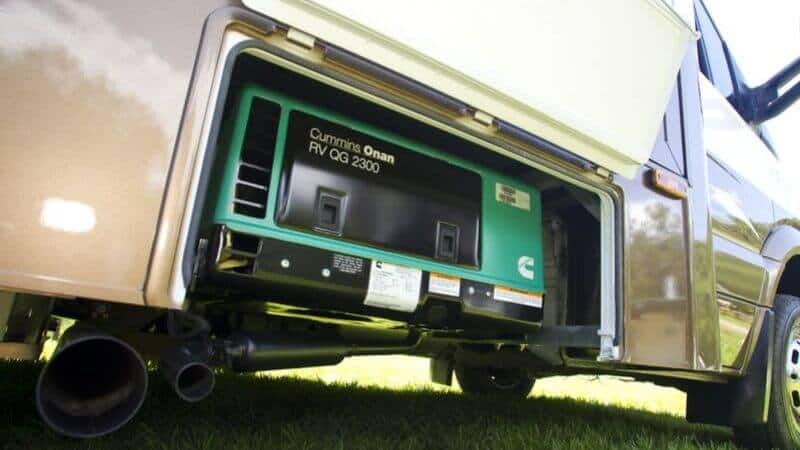
- Gray Water Capacity: The amount of used water from the kitchen sink, bathroom sink or shower that an RV’s gray water tank can hold.
- GVWR (Gross Vehicle Weight Rating): The maximum weight an RV must not exceed to ensure safe traveling. Includes the vehicle’s chassis, body, engine, fluids, fuel, accessories, passengers, cargo, etc.
H to L:
- Height: Top to bottom measurement of an RV.
- Hitch (or receiver hitch): The connection between a tow vehicle and an RV.
- Hitch Capacity: The towing capacity of the receiver hitch, measured in pounds.
- Holding Tanks: Term that refers to an RV’s fresh water tank, gray water tank, and black water tank.
- House Battery: The battery in a motorhome that operates the 12-volt electrical system within the motorhome.
- Interior Height: Floor to ceiling measurement inside an RV.
- Inverter: Converts 12 volt DC power to 110 volt AC power. All RV’s have these.
- King Pin Weight (or Pin Weight): The actual weight pressing down on the fifth wheel hitch by the trailer. Generally, the recommended amount of King Pin Weight is 15% – 25% of the gross trailer weight (UVW).
L to P:
- Laminated Walls: This term refers to the outside wall construction of an RV. Traditionally, this consists of an aluminum frame, styrofoam, fiberglass sheeting treated with a gel-coat, and then laminated. Many Brands Have these: Rockwood RV’s, Spree’ RV’s, Connect RV’s, Alta RV, Winnebago RV’s,
- Length: Front bumper to back bumper measurement of an RV.
- Leveling Jacks: Equipment used to make sure an RV sits level on the ground.
- LP Gas: Liquid Petroleum, another term for Propane.
- Loft Bed: A type of sleeping space where the bed is on a raised platform above another room or multi-use area. Most often found in fifth wheel or travel trailer RV types.

P to T:
- Park Model or Destination Trailers: A specific type of RV that is designed to be parked in one area. Most commonly in a seasonal campground.
- Part-timers: Term used to describe people who travel and use an RV for more than the occasional vacation but do not live in their RV full-time.
- Rear Kitchen: A type of floorplan with the kitchen located at the back of the RV. Most Commonly in travel trailers or Fifth-Wheels.
- Rear Living: This term describes an RV floorplan with the living room located at the rear of the coach. Most Commonly in travel trailers or Fifth-Wheels.
- Rear Sleeping: A type of floorplan with the master bedroom located at the rear of the RV. Most Commonly in travel trailers or Fifth-Wheels.
- Sleeping Capacity: The number of sleeping spaces in an RV. There are several different types of sleeping arrangements available. Examples include standard queen and king size beds, hide-a-bed or jack-knife sofa beds, convertible booth dinettes, fixed bunk beds, and drop-down bunks. Ask Krenek RV for more details.
- Slide-outs: Expanding walls or sections of an RV. Slide-outs create additional living area within the RV.
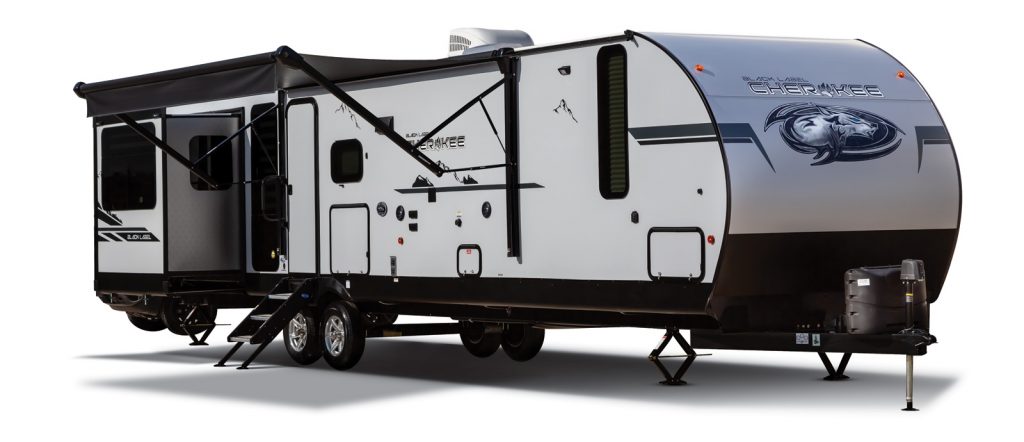
Sway Bar System: Krenek RV highly recommends Equalizer sway-bars equipment designed to reduce or eliminate side-to-side sway movement of a travel trailer towable RV. These come in many sizes and are wildly popular !

T to Z:
- Toad: A vehicle towed behind an RV; also called a “dinghy” occasionally.
- Tongue Weight: The actual weight pressing down on the hitch ball located on the tow vehicle. Generally, tongue weight is 10% to 15% of the gross vehicle weight (GVW).
- Tow Rating: The maximum weight a tow vehicle can safely tow, determined by the vehicle manufacturer. Consult the vehicle manufacturer or use a towing guide to find out the towing capacity of a particular vehicle.
- Underbelly: Term used to describe the bottom surface of an RV; similar to undercarriage.
- Weekenders: RV owners who travel and use an RV primarily on weekends throughout the year.
- Weight Distribution System: Transfers the weight from the tongue of the trailer and redistributes it to the front of the tow vehicle.
- Wheel Base: The distance between the center lines of the primary axles on an RV.
- Width: The side to side measurement of an RV (doesn’t include the added width of extended slide-outs).
You now know all these RV terms, take a look at our other great content for new RVers or experienced RVers In this post, we explain the differences between types of RVs. After that, take a look at some common RV myths and find out the truths behind them. The RV Lifestyle has grown more and more popular every year and represents the safest, most cost effective and most fun way for a family to make lifelong memories. Make Krenek RV Part of your RV Adventure!
